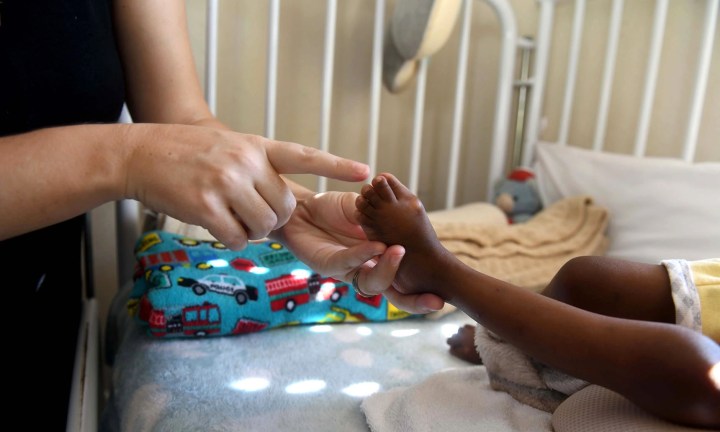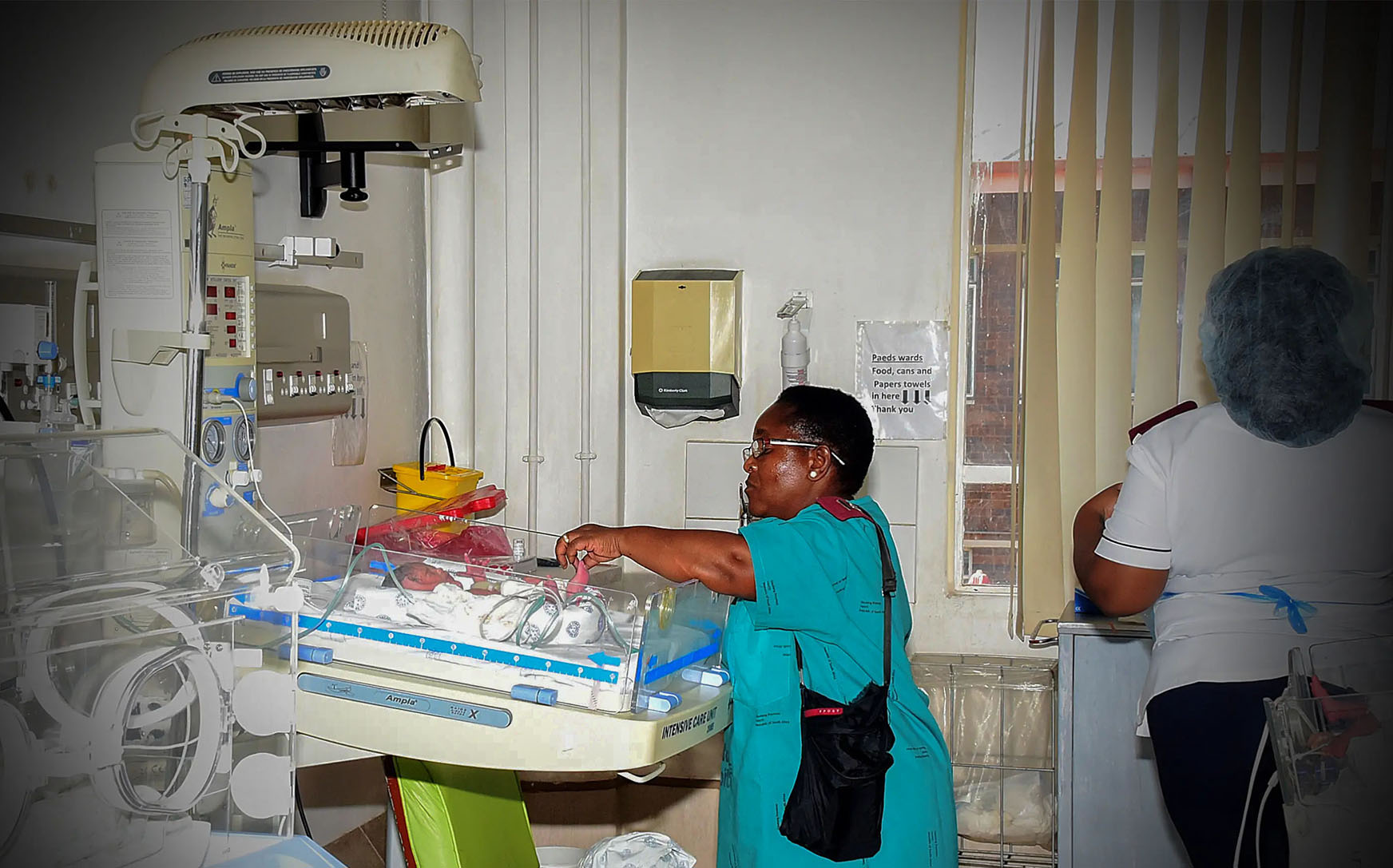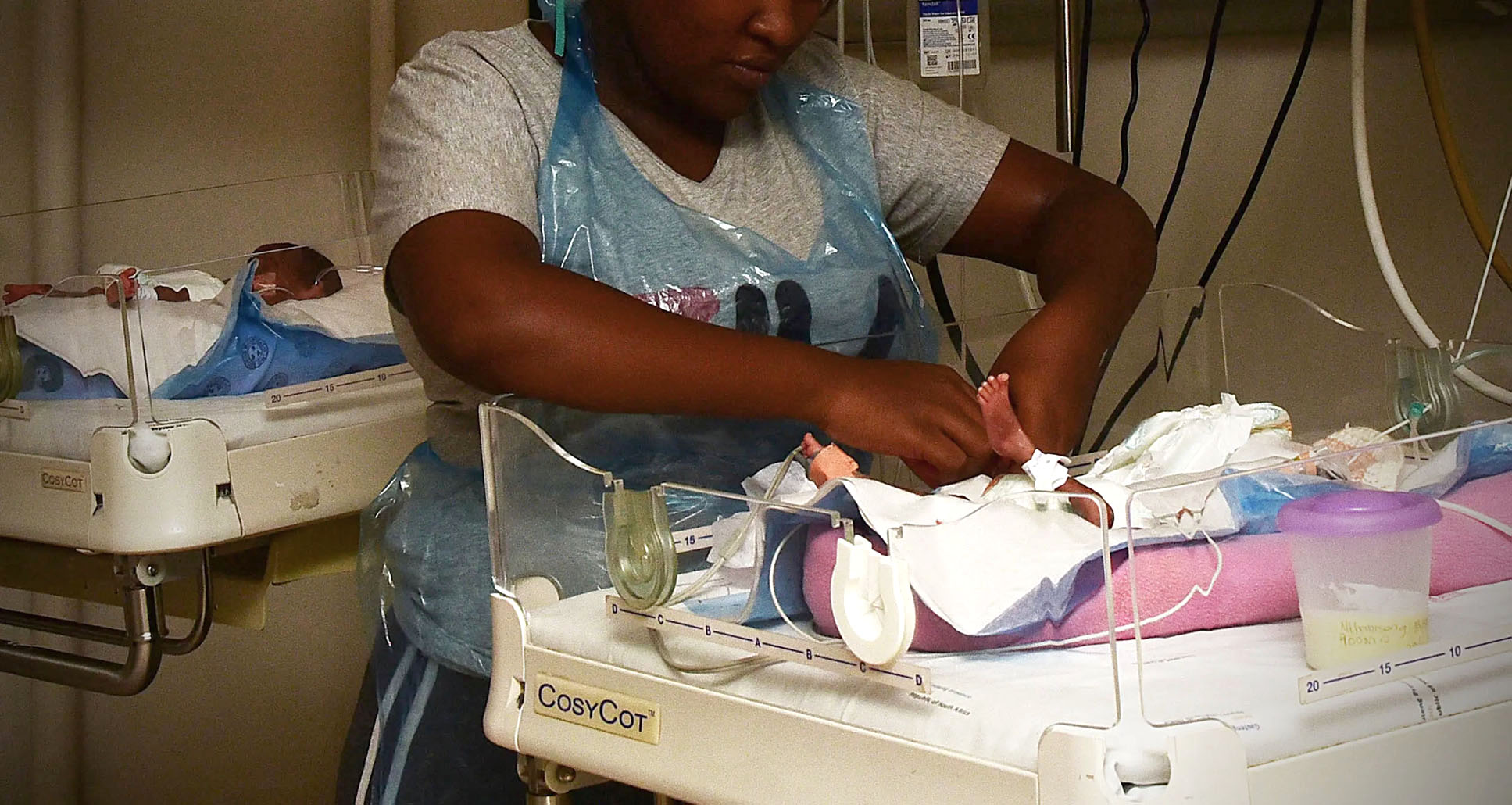SPOTLIGHT PART ONE
High prevalence of cerebral palsy in South Africa compounded by overstretched public health system

In this first article in a two-part series, Elri Voigt asks what we know about the congenital disorder in South Africa. In part 2 we will look at what can be done to reduce the incidence of cerebral palsy in the country.
It is estimated that around half of medical negligence claims against government are for cerebral palsy-type claims. Apart from the direct impact on infants and families, cerebral palsy thus also has a major impact on health budgets.
What is cerebral palsy?
“Cerebral palsy is an injury to the developing brain. The injury only happens once, but the consequence of that injury is seen throughout the child’s lifespan,” says Dr Natalie Benjamin-Damons, a physiotherapist and lecturer in paediatric physiotherapy at the University of the Witwatersrand.
The consequence of the injury will be seen in how the child is growing, as the way the muscles and bones grow is different than in other children, explains Benjamin-Damons. Children with cerebral palsy don’t move in the same way, will often have physical disabilities, could present with epilepsy, and have speech, hearing, or understanding difficulties.
“A lot of the time, there’s also the cognitive disabilities, which is the ability to learn and understand your environment,” she says.
Cerebral refers to the brain, while palsy refers to loss or impairment of motor function. The term, however, covers a wider range of conditions and symptoms than these two words suggest.
Dr Mark Richards, a Neurodevelopmental Paediatrician at the University of Cape Town and Red Cross Children’s Hospital (speaking in his personal capacity) explains that cerebral palsy is not a single disease or disorder and instead describes it as a spectrum of different problems in the brain, which can result from a growth problem or an injury to a young brain.
“This will always affect the control of movement or posture, but all parts of the brain can be affected. It is best understood as a holding term for a large array of conditions which are of a permanent nature,” he says.
Dr Stefan Gebhardt, Professor in Obstetrics and Gynaecology at Stellenbosch University, adds that the diagnosis of cerebral palsy is not made at birth. Instead, a baby can be born with depressed function of the brain, known as neonatal encephalopathy. Cerebral palsy will only be diagnosed later.

The neonatal unit at Leratong Hospital in Krugersdorp. (Photo: Denvor de Wee / Spotlight)
Higher than average prevalence in SA
“Globally, out of every 1,000 babies that are born every year, between one and four or more babies will have cerebral palsy. Here in South Africa, it is estimated that for every 1,000 babies that are born in a specific year, about 10 babies will have cerebral palsy,” says Dr Thembi Katangwe, a Paediatric Neurologist and PhD Candidate at Stellenbosch University’s Department of Paediatrics and Child Health.
According to Katangwe, the figures for South Africa are based on studies done over two decades ago and new research is desperately needed.
Though not a direct measure of actual cerebral palsy cases, medical negligence claims against the government suggest that rates remain high. Using data from provincial departments of health up to the 2018/2019 financial year, The Clinton Health Access Initiative Health financing teams inferred that about “50% of all claims are cerebral palsy-type claims (birth asphyxia, neonatal encephalopathy, cerebral palsy), making up more than 60% of the liabilities in six out of the nine provinces”.
What causes cerebral palsy?
The list of potential causes, which can occur at various stages of pregnancy or even after delivery, are complex and varied. Causes range from physical injuries, lack of sufficient oxygen, infections, and pre-term delivery to developmental issues or even genetics, all of which affect the baby’s developing brain.
Katangwe explains that injuries to the developing brain that can cause cerebral palsy can occur either during pregnancy, during birth, or in the first few years of life, especially in children younger than two.
Richards adds that when it comes to brain injuries that occur during labour, the term hypoxic ischaemic encephalopathy (HIE) is a more accurate description and not all incidences of HIE will result in cerebral palsy.
Gebhardt says that one set of causes is an infection during pregnancy, “especially cytomegalovirus, syphilis, varicella (chickenpox), toxoplasmosis, [and] rubella”. Development abnormalities in the brain and intra-uterine growth restriction usually due to placental problems can also cause cerebral palsy.
He adds that heavy alcohol use and/or smoking by the mother during pregnancy can increase the risk of cerebral palsy. The risk is also higher when pregnant with twins or triplets, or in babies born too soon, either during a premature birth and/or with a low birth weight.
Gebhardt says that only a small number of cerebral palsy cases are due to factors related to the delivery process. For cerebral palsy to be attributed to a birth injury, four signs need to be present in a newborn.
These are when an otherwise healthy term baby, meaning a baby older than 34 weeks, has an Apgar score of less than five after delivery, shows signs of decreased oxygen levels (which can be measured in blood from the umbilical cord), exhibits a pattern of injury that will be seen on brain imaging, and has multisystem organ failure consistent with neonatal encephalopathy. (The Apgar score is a test given to newborn babies that rates them on their colouring, heart rate, reflexes, muscle tone, and respiration. When added up the maximum score a baby can receive is ten.)
Finally, factors after birth that can cause cerebral palsy according to Gebhardt are severe jaundice in the baby which can cause brain damage if it is not treated in time, known as kernicterus as well as the baby nearly drowning or an infection of the brain like malaria or meningitis.
What can be done to reduce the risk?
It is thought that in South Africa many of the causes of cerebral palsy are preventable, according to Katangwe, and there are measures before pregnancy as well as during pregnancy, labour, and after the birth that can be taken to reduce a baby’s risk of developing cerebral palsy.
Education also can go a long way in reducing the risk during pregnancy, according to Benjamin-Damons. She says that educating mothers on good prenatal care and nutrition, as well as how often they need a check-up and worrying signs they need to look out for is vital.

Causes of cerebral palsy range from physical injuries, lack of sufficient oxygen, infections, and pre-term delivery to developmental issues or even genetics, all of which affect the baby’s developing brain. (Photo: Denvor De Wee / Spotlight)
Before and during pregnancy
Katangwe explains that reducing the risk of cerebral palsy can be done before pregnancy by ensuring “any infections that the mother-to-be may have, are treated and any chronic illnesses are well controlled”.
During pregnancy, she says it is essential that the mother gets early and regular prenatal care, and any infection, sickness, bleeding, or signs of preterm labour gets treated or managed at a health facility. It is also important that the expectant mother knows her blood type and rhesus group because “a difference between the mother and baby in this can cause jaundice in the baby”.
Reducing risk during labour
To reduce the risk of cerebral palsy during labour, Katangwe says, it should take place in a health facility where the mother and child “should be monitored and managed by skilled healthcare workers to ensure that no signs of foetal distress are missed”. “And if distress is detected, appropriate intervention should be taken “to ensure continued blood supply and oxygenation to the foetal brain.”
The natural, vaginal birth process, Gebhardt explains, is a difficult time for the baby, as each contraction leads to a decreased blood flow through the placenta, which reduces oxygen to the baby. “A baby with normal ‘reserves’ can survive this without problems, but if there is already undiagnosed underlying growth restriction or placental abnormalities, which cannot be detected with our current antenatal programmes, that baby may not cope with that ‘normal’ lack of oxygen during normal contractions,” he says.
Gebhardt says that in high-risk pregnancies at large hospitals, the babies are monitored with external foetal monitoring that can sometimes alert doctors to such a problem. However, in low-risk pregnancies, foetal distress can be missed because the protocol outlined states that the foetal heartbeat must be monitored every five minutes during labour.
“And even if it is detected, a hospital with the ability to do a caesarean section is often hours away,” he adds.
Richards expands on this, explaining that obstetricians face difficulties in ensuring a safe birth due to the lack of diagnostic ability to detect whether the baby is experiencing brain-damaging shortage of oxygen or something inconsequential.
“The technology just doesn’t exist. When a labour is watched very closely, we can observe proxies for oxygen supply problems, but our tools are inexact. To make pregnancy and childbirth 100% safe is an impossibility. To make labour about as safe as it could be, we could do caesarean sections on everybody, [which is] also not feasible for many reasons,” he says.
He adds that there are some events, like the placenta separating from the uterus before birth that is extremely difficult to prevent and almost always impossible to remedy in any country unless it is immediately responded to.
The state of many hospitals in the public sector, especially the lack of adequate staff can sometimes result in signs of foetal distress being missed. “In stressed maternity services, patient load, staffing adequacy, and experience do sometimes result in the failure to recognise the labour at risk, such as a foetus demonstrating unusual heart rates and responding timeously. And the response, when it is attempted, might meet difficulties in the form of ambulance shortages, access to surgery, or experienced medical opinion,” Richards says.
What can be done to reduce the risk after birth?
Finally, after a baby is born there are a number of things that can be done to reduce the risk of cerebral palsy. Katangwe explains that it is important to look for signs of jaundice, such as a tinge of yellow colouring on the baby’s skin and if detected have it treated at a health facility immediately. Keeping the baby’s vaccinations up to date is also key, as it can prevent infections such as tuberculous meningitis.
“It is also important to prevent injuries in the home as well as outside the home,” she adds. DM/MC
*This is part one of a two-part Spotlight special series on cerebral palsy in South Africa. In part two we will look at the systemic causes of cerebral palsy and ask how the public healthcare system can respond more effectively.
*This article was published by Spotlight – health journalism in the public interest.


















 Become an Insider
Become an Insider
Comments - Please login in order to comment.